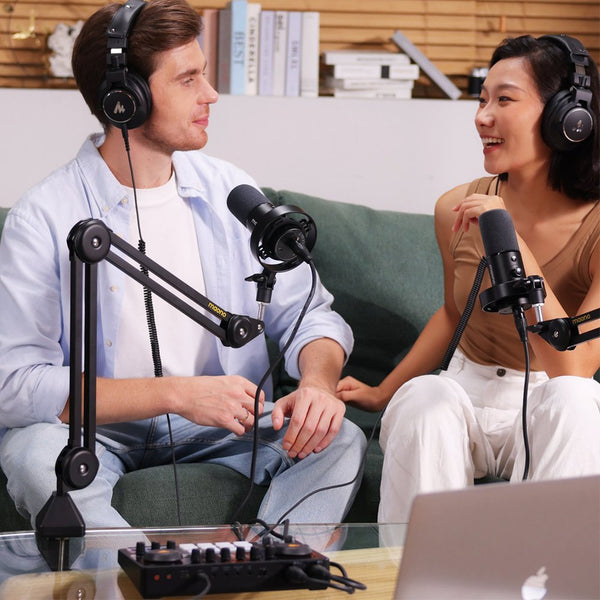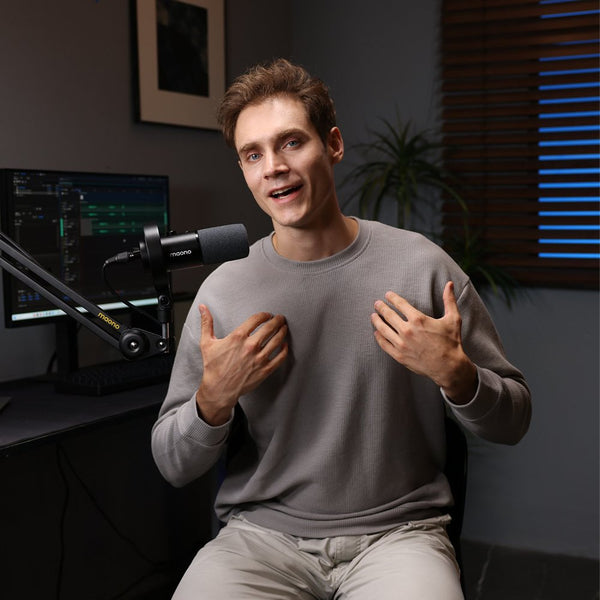You often see fit people carrying tumblers filled with protein shakes or smoothies, right? If you're just starting your weight loss and clean eating journey, you might be wondering which appliance to invest in: a blender or a food processor. But which one is better for making smoothies? Read on to find out.
Smoothies are a staple in many weight loss and healthy eating plans. They’re quick to prepare, can be packed with nutrients, and help curb hunger; but when it comes to making them at home, many people wonder: should I use a blender or a food processor? Each appliance has its strengths, and choosing the right one can impact the texture, consistency, and even nutritional quality of your smoothies. And if you're planning to share your smoothie-making journey online, pairing your kitchen setup with a wireless microphone ensures your audience hears you clearly while you demonstrate. This guide explores both tools and helps you decide which is the best fit for your weight loss goals.
Top Budget Blenders and Food Processors for Healthy Smoothie Prep
When budget is a concern, you don’t have to sacrifice quality. Top-rated affordable blenders include the Nutribullet Pro, Magic Bullet, and Hamilton Beach Personal Blender. These are great for single-serving smoothies and simple cleanups.
For food processors, consider the Cuisinart Mini-Prep Plus or the Hamilton Beach 10-Cup Food Processor. While not designed exclusively for smoothies, they can handle soft fruits and some frozen items with decent results.
Can You Make Smoothies in a Food Processor Without Ruining It?
Yes, you can make smoothies in a food processor, but with a few caveats. Food processors are built for chopping and slicing rather than liquefying. You might not achieve the silky-smooth texture that blenders provide, especially when working with leafy greens or fibrous fruits. However, by adding enough liquid and blending in stages, you can make a drinkable smoothie without damaging the blades or motor.
What to Look for in a Blender for Weight Loss Smoothies
If weight loss is your goal, you’ll want a blender that can handle:
-
Frozen fruits and ice
-
Protein powders and fibrous vegetables
-
Seeds and nuts for healthy fats and texture
-
Large volumes, especially if you batch prep
High-speed blenders like the Vitamix or Ninja Professional Blender are ideal but can be costly. More affordable options like the Oster My Blend still offer good power and reliability for basic smoothies.
How to Make Thick, Filling Weight Loss Smoothies Without a Blender
No blender? No problem. Here are a few hacks:
-
Use a food processor
Blend soft fruits like bananas, avocados, and berries with yogurt or milk.
-
Mash by hand
Mash fruits with a fork and mix with protein powder, oats, and milk in a jar.
-
Overnight method
Soak ingredients like oats, chia seeds, and frozen fruit overnight so they soften and blend easily with a hand whisk or spoon.
These methods work well for travel, dorm life, or minimalist kitchens.
FAQs:
What’s the difference between a blender and a food processor for smoothies?
Blenders are designed for liquids and produce smooth textures, while food processors are better for chopping and require more liquid to process ingredients smoothly.
Are high-speed blenders worth it for dieting and fitness goals?
Yes. They break down tough ingredients like kale, seeds, and frozen fruit, making it easier to enjoy nutrient-packed smoothies.
Can a food processor blend ice and frozen fruits like a blender?
Some food processors can handle frozen items, but they usually struggle with ice and may wear down faster than a dedicated blender.
Which is more affordable for smoothie prep on a budget?
Personal-sized blenders are typically more affordable than food processors and are more tailored for smoothie-making.
Are smoothies made in a food processor just as smooth?
Usually not. Food processors may leave small chunks or a grainier texture.
Will using a food processor affect the nutritional value of my smoothie?
No. The processing method doesn’t significantly change the nutrient content.
Can I use a personal-sized blender like Nutribullet for weight loss shakes?
Absolutely. Nutribullet is ideal for single-serve, nutrient-dense weight loss smoothies.
What are the best blenders for thick smoothies with protein and fiber?
Look for powerful models like the Vitamix E310, Ninja Foodi, or Nutri Ninja Auto-iQ.
Can a food processor crush seeds and nuts for my smoothie?
It can chop them, but might not fully blend them into a smooth consistency like a blender.
Do I need both a blender and a food processor in my kitchen?
Not necessarily. If smoothies are your focus, a blender is more essential.
What size blender is best for single-serving smoothies?
Blenders with a 16- to 24-ounce cup size, like those from Nutribullet or Magic Bullet, are perfect.
Can I make meal-replacement smoothies in a food processor?
Yes, if ingredients are soft and liquid is added. Texture may vary.
Are blenders easier to clean than food processors?
Generally, yes. Blenders often have fewer parts and self-cleaning functions.
Which tool saves more prep time for busy mornings?
Blenders are faster and easier to use for quick, grab-and-go smoothies.
How long does a smoothie last if made in a food processor vs. blender?
There’s no major difference. Store in an airtight container and consume within 24 hours.
Is a blender or food processor better for making green smoothies?
Blenders are better suited, especially for breaking down tough greens like spinach or kale.
Do I need a special blender for crushing frozen berries or ice?
Yes. Look for blenders with at least 600 watts of power and strong blades.
FAQs on Vlogging About Fitness Regime
What microphone should I use for filming in the kitchen for my YouTube content?
For content creators who vlog about fitness or smoothie prep, a wireless microphone is essential for hands-free, high-quality audio.
The best wireless Lavalier mic options for this setup include the Maono Wave T5 and Maono Wave T1 Mini.

-
Dual wireless transmitters for interviews or dual-host setups
-
Up to 1,000 feet range
-
Real-time audio monitoring via Maono link app
-
Compatible with smartphones, cameras, and laptops
-
Built-in noise cancellation
-
A great Lavalier microphone wireless choice for mobile vlogging

-
Lightweight and compact
-
Delivers clear, focused audio
-
Plug-and-play setup for smartphones, cameras, and laptops
-
Works perfectly as a wireless lavalier microphone for iPhone users
-
Great for kitchen demos, smoothies tutorials, and daily vlog content
Both mics are ideal for cooking demos, smoothie tutorials, or live streaming your health journey. Whether you're recording cooking tips, fitness advice, or product reviews, these mic Lavalier options ensure clear audio and effortless mobility.
If you're just getting started, these also rank among the best Lavalier microphone choices for lifestyle and wellness creators.
Final Thoughts:
Blenders and food processors both have their place in a healthy kitchen. For weight loss smoothies, blenders are usually the better tool, especially for those who want smooth, fiber-rich, protein-packed drinks with minimal prep time. However, food processors can work in a pinch or for certain ingredients.
If smoothies are a major part of your wellness routine, investing in a good blender pays off. Also, if you’re sharing your fitness journey online, pair it with a wireless mic like the Maono Wave T5 or T1 Mini to ensure your message is heard loud and clear. Health starts with smart choices—and that includes your kitchen tools.
Related Article:
Smoothie Vlogging Tips: Best Wireless Mic, Recipes & Filming Secrets



